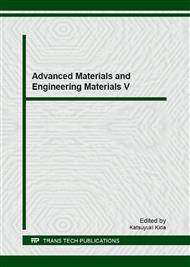p.22
p.27
p.34
p.39
p.44
p.49
p.56
p.61
p.65
Wear Mechanisms of Ceramic Cutting Tool when Cutting Hardened Steel Rolls
Abstract:
Rolls are important tools in the steel industry. With the increase of the automobile and the mould, rolls are increasing rapidly. Hard rolls are very difficult to cut, almost all hard rolls are cut by only by grinding, and the grinding efficiency is relatively low, and it consumes a lot of cutting fluid. In this paper, the life and tool wear of ceramic tools in different cutting conditions were analyzed. Crack, chipping of cutting tools were analyzed. The experimental and theoretical analysis confirmed that the generation and expansion of the crack are the main wear mechanism of the tool failure, when the ceramic tools cutting cold rolls.
Info:
Periodical:
Pages:
44-48
Citation:
Online since:
August 2016
Authors:
Keywords:
Price:
Сopyright:
© 2016 Trans Tech Publications Ltd. All Rights Reserved
Share:
Citation:


